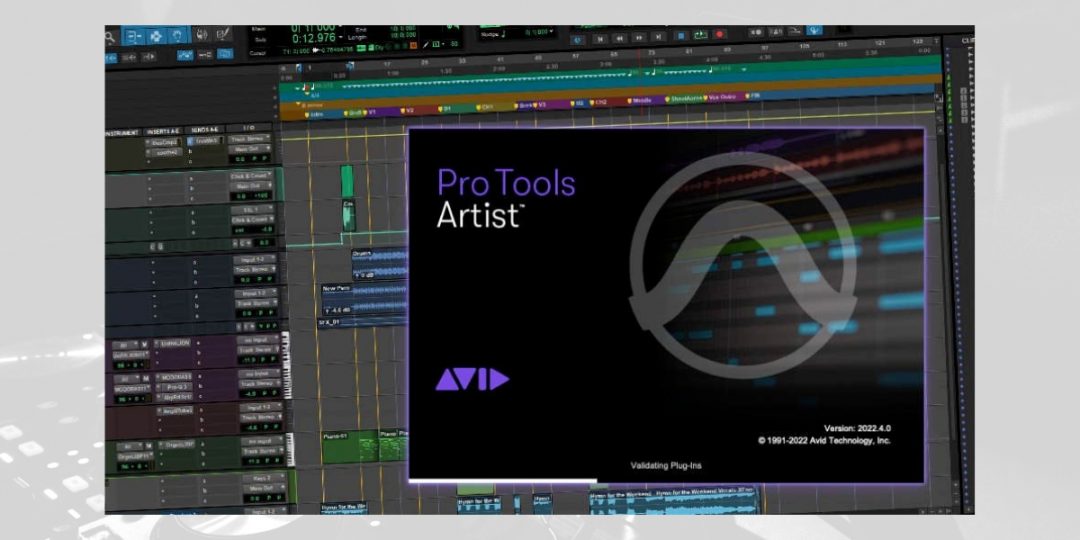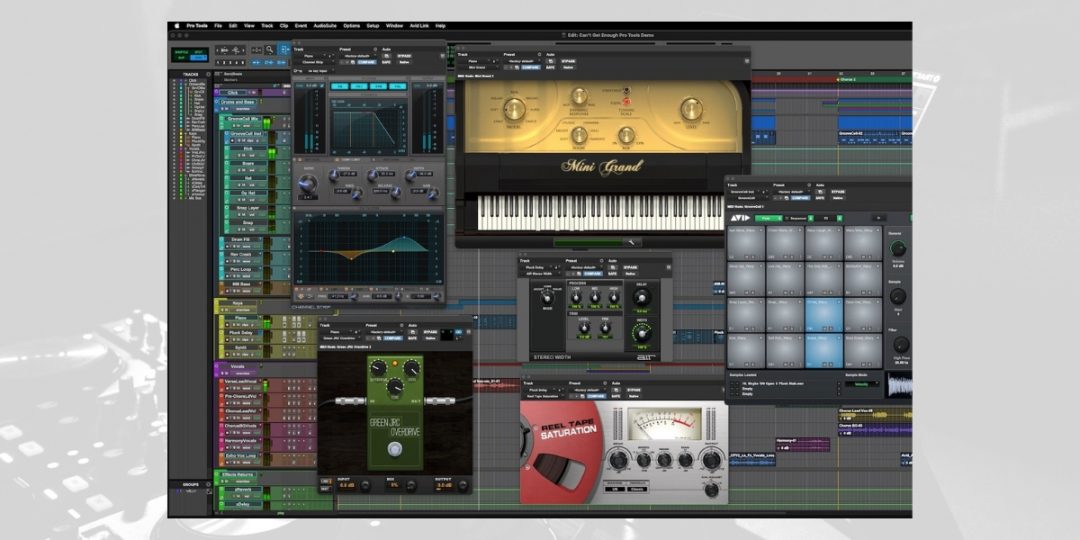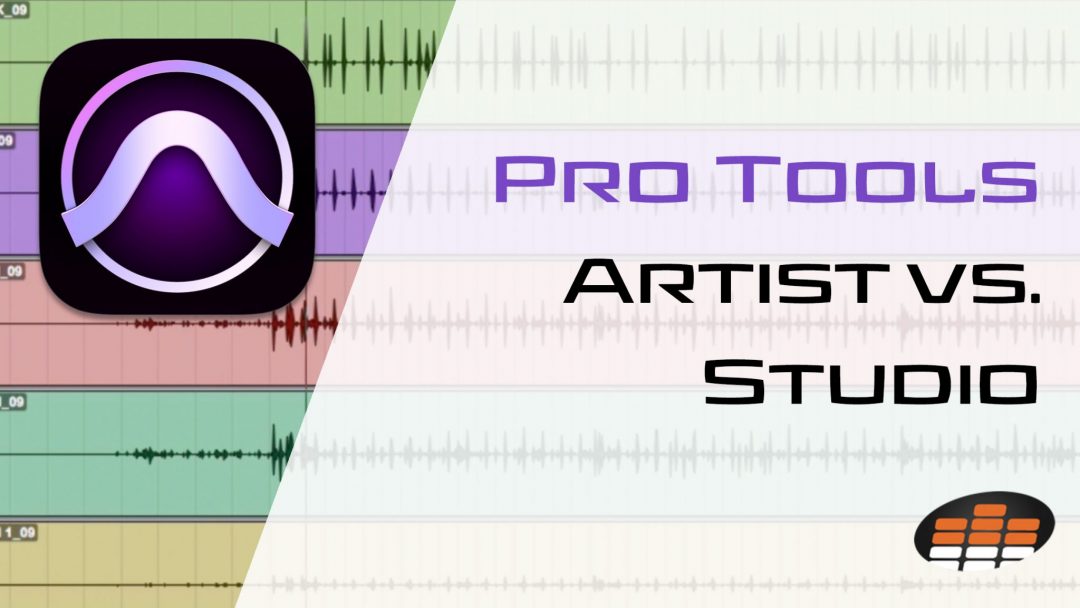Embarking on a musical journey often involves making pivotal decisions, especially when choosing the right tools. For many musicians and audio engineers, the debate of “Pro Tools Artist vs Studio” presents a crucial crossroad. This comparison isn’t just about picking a digital audio workstation but finding the perfect companion for your audio creativity.
Whether you’re a budding artist curious about recording your first track or a seasoned pro considering an upgrade, understanding the nuances of these Pro Tools versions is key. Our discussion will examine both Pro Tools Artist and Studio, examining their features, differences, and suitability for different users.
Trying To Decide Which Pro Tools Subscription Is Best For You?
When selecting a Pro Tools subscription, the choice often narrows down to two popular versions: Pro Tools Artist and Pro Tools Studio. This decision impacts the quality and scope of your music production.
Both versions share core functionalities like mixing, editing, mastering, and a broad array of plugins and instruments. However, significant differences in their capabilities might sway your decision based on your production needs.
Pro Tools Artist vs Studio: What’s The Difference?
Understanding the key differences between Pro Tools Artist and Studio is crucial in making an informed decision. While both cater to music production, they are designed for different user levels.
Pro Tools Artist is ideal for beginners or those with more straightforward production needs. Pro Tools Studio, however, offers advanced features for more complex projects and professional environments.
Knowing which version aligns with your current skills and future goals is essential for your journey in music production.
What is Pro Tools Artist?

Pro Tools Artist is an entry-level digital audio workstation (DAW) for emerging artists and home studios. It’s designed for simple to intermediate music projects, focusing on essential music creation, recording, and mixing tools. This version is particularly suitable for those starting their music production journey, offering a user-friendly interface and fundamental functionalities.
- Pricing: Pro Tools Artist is priced at $99 USD/year or $9.99 USD/month.
- Track Count: It supports up to 32 audio tracks and 64 MIDI tracks, ideal for basic project needs.
- Mixing Capabilities: Offers stereo mixing, meeting the needs of standard music production projects.
Understanding the Features of Pro Tools Artist
Pro Tools Artist provides a variety of plugins suitable for basic production needs. This includes dynamics and EQ plugins like BF-2A and Channel Strip, essential effects, and filters such as AIR Chorus and AIR Enhancer. It also includes a range of virtual instruments like AIR Boom and AIR Mini Grand.
These features are great for exploring different musical styles within a more simplified setup.
What Is Pro Tools Studio?
Pro Tools Studio, on the other hand, is an advanced DAW designed for professional music production. It caters to experienced musicians and producers, offering a comprehensive platform for larger and more complex projects.
- Pricing: It is priced at $299 USD/year or $29.99 USD/month.
- Track Count: Pro Tools Studio supports up to 512 audio and 512 instrument tracks, suitable for extensive and intricate productions.
- Mixing Capabilities: It also includes stereo, surround, and up to 7.1.6 Ambisonics mixing capabilities, catering to advanced production requirements.
- Advanced Features: Pro Tools Studio offers advanced automation, an important feature for complex and nuanced productions.
What Does Pro Tools Studio Include?

In addition to the standard features in Pro Tools Artist, Pro Tools Studio offers enhanced plugins like the 304C Compressor and more sophisticated effects and emulators, including Eleven Lite.
It also boasts advanced reverbs and delays, such as ReVibe II and AIR Spring Reverb, and more robust virtual instruments, providing a richer array of options for professional-grade music creation.
In summary, Pro Tools Artist best suits beginners and those working on basic to intermediate projects. At the same time, Pro Tools Studio is tailored for professionals seeking an all-encompassing solution for high-end music production. The choice between the two should be based on your project’s scale, your experience level, and specific production needs.
Pro Tools Studio vs. Ultimate: How Do They Compare?
Pro Tools Ultimate is the most advanced version of the Pro Tools series, made for high-end studios and big-budget projects. The critical difference between Pro Tools Studio and Ultimate lies in the latter’s ability to handle massive amounts of data without compromising performance. This is true even when using several heavy plugins simultaneously.
Pro Tools Ultimate supports unlimited track counts with HD hardware systems. It includes advanced features like robust VCA fader controls for precise level control, advanced automation capabilities like Trim Automation, and a comprehensive Channel Strip EQ/Dynamics section.
It’s optimized for extensive data handling capacity and compatibility with HD hardware systems, supporting up to 192 channels of I/O, making it suitable for complex projects requiring advanced tools.
In summary, while Pro Tools Studio offers a complete set of tools for professional music production, Pro Tools Ultimate elevates this with its capacity for handling large-scale projects and more complex audio engineering demands.
Therefore the choice between the two depends on the scale of your projects, budget, and specific production requirements.
Which Version of Pro Tools Should I Buy?
Choosing between Pro Tools Artist and Studio hinges on your production needs and expertise. If you’re starting out or working on smaller projects, Artist’s straightforward functionality and affordability make it an excellent choice.
For professionals or those undertaking larger projects, Studio’s extensive track count, sophisticated mixing capabilities, and advanced features align better with such demands.
Advantages of Using Pro Tools Studio for Advanced Users
Pro Tools Studio’s advanced features cater to the needs of seasoned producers and audio engineers. Its capability to handle up to 512 audio tracks and advanced multichannel mixing options, including Dolby Atmos, is essential for large-scale productions.
Studio’s enhanced automation features provide finer control over complex mixes, making it indispensable for professional-quality output.
Exploring the Limitations and Benefits of Pro Tools Artist
Pro Tools Artist, while limited in track count (32 audio tracks) and lacking advanced mixing and automation features, is beneficial for emerging artists and small studios. Ultimately, its simplicity and lower cost make it highly accessible. This allows users to focus on essential recording and mixing tasks without the complexity of advanced features.
In summary, your choice between Pro Tools Artist and Studio will come down to your project requirements, expertise level, and budget considerations. Artist offers a solid foundation for newcomers, while Studio provides advanced capabilities for professional-grade productions.
Download our most popular resource: 6 Steps for Creating Radio Ready songs to learn the fundamentals of what goes into a professional mix from renowned Producer, Songwriter & Mixer Warren Huart, who has worked on several Grammy-nominated albums!
User Scenarios: Choosing the Right Fit for Your Projects
Let’s explore a few real-world scenarios to help you better understand which Pro Tools version aligns with your needs. These examples showcase how individuals with varying project types and professional backgrounds might choose between Pro Tools Artist and Studio.
- Scenario 1 – The Home Studio Musician (Pro Tools Artist): Emma, an aspiring singer-songwriter, records and produces her songs from her home studio. Her projects typically involve recording vocals, several instruments, and basic mixing. With its 32 audio tracks and user-friendly interface, Pro Tools Artist perfectly meets her requirements for creating high-quality music without overwhelming her with too many advanced features.
- Scenario 2 – The Professional Music Producer (Pro Tools Studio): John, a professional music producer, regularly works on complex projects involving multiple artists. His work demands extensive track layers, sophisticated mixing capabilities, including Dolby Atmos, and advanced automation for precise control. Pro Tools Studio supports up to 512 audio tracks and enhanced mixing features and is, therefore, his go-to DAW for delivering polished, industry-standard productions.
- Scenario 3 – The Independent Sound Designer (Pro Tools Artist): Mia is an independent sound designer working primarily on short films and podcasts. Her projects require efficient sound editing, basic mixing, and some MIDI work. However, she only needs a limited number of tracks or complex post-production tools. Pro Tools Artist offers Mia a balanced solution with its straightforward editing and mixing capabilities. One that aligns with both her project scale and technical needs.
Closing Thoughts: Pro Tools Artist vs Studio
Deciding between Pro Tools Artist vs Studio is a decision that hinges on your unique musical journey and professional aspirations. Whether you’re just starting or are a seasoned pro, selecting the correct version can significantly impact your creative process.
Remember, the best choice is one that meets your current needs and supports your future growth. We hope these insights empower you to feel equipped to make an informed decision that enhances your music production journey.
Are You Ready To Become A Pro Tools Master?
Learning the fundamentals of Pro Tools is key to creating consistent and great-sounding mixes. If you want to deepen your knowledge in recording and mixing with Pro Tools, consider enrolling in our “Ultimate Guide To Pro Tools” course.
Guided by industry expert Jon Connolly, this course covers everything from system setup and optimization to advanced recording, editing, and mixing techniques. You can gain insights into the little-known features of Pro Tools that can significantly speed up your workflow, ensuring you’re well-equipped to produce music to a professional standard, whether in a home studio or a professional setting.





